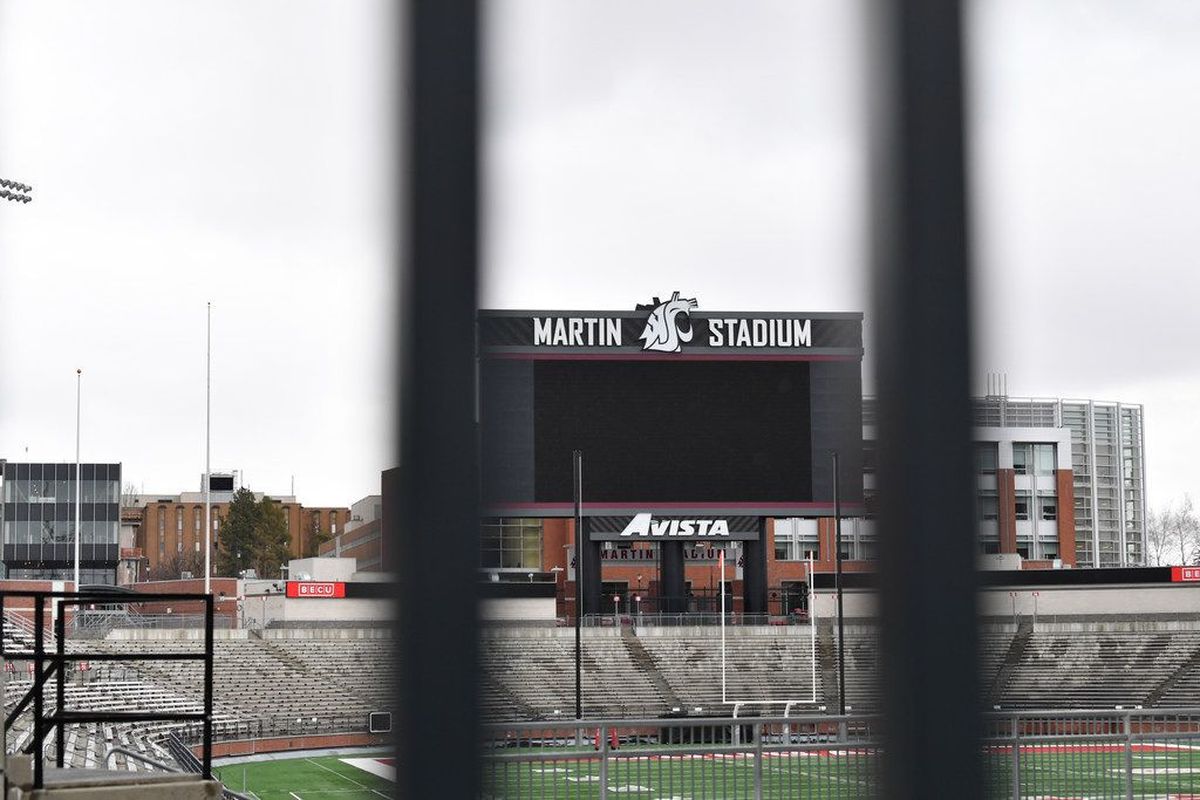Anticipating $102.7 million athletics deficit by 2022, Washington State braces for uncertainty

The deficit Washington State’s athletic department has grappled with for years is expected to reach $93.5 million by the end of the current fiscal year before rising in 2021 and 2022 and finally leveling out by 2023.
According to financial projections released by the department at WSU’s recent virtual Board of Regents meeting, held Thursday and Friday, athletics could face a $99.3 million accumulative shortfall by the end of the 2021 fiscal year, with the deficit climbing to $102.7 million by 2022. The department expects to make progress the following two years, anticipating a $100.9 million deficit in 2023 and $99 million in 2024.
All of those numbers, of course, are contingent on the school surviving the current COVID-19 pandemic, which naturally would worsen the financial crisis facing the department, especially if the pending football season is altered or eliminated by the fallout of the international coronavirus outbreak.
Unsure of what the intercollegiate athletics landscape will look like in a month, let alone two months when the college football season is slated to begin, WSU hasn’t unveiled financial projections specifically adjusted for COVID-19, although the pandemic will touch a handful of revenue sources, including but not limited to ticket sales, fundraising, corporate sponsorships, conference distribution and merchandise.
“This is an optimistic budget, I’ll be pretty clear about that,” WSU Athletic Director Pat Chun said at the meeting. “And then a lot of it, we’ll see where we land hopefully at the end of July or early August when we as a campus can make a decision on what attendance can look like at Martin Stadium and our other venues for that matter.”
Chun said his department has modeled out a negative 15% economic impact factor for the upcoming school year, which would translate to about $6.9 million in lost potential revenue.
Acknowledging WSU is already operating with one of the leanest budgets at the Power Five level, Chun, who approved a wave of salary reductions and hiring freezes a few months ago to offset revenue losses, said his staff is prepared to exercise more extreme cost-cutting measures if necessary.
“We’ve limited all of our capital expenses and we’ve really cut our marketing budget in half, more on the expectation that we’ll have social distancing in our stadium,” Chun said. “So understanding that, we’ll be marketing very differently. So really the next stage for athletics is basically we’ve modeled salary reductions, furloughs and the elimination of positions. If we go to that next step, we’re prepared to make those decisions.”
The school also sketched out plans on how to handle the deficit in the short term, which like in years past relies on a variety of cash transfers from nonappropriated sources. In order to offset the projected $93.5 million deficit for the 2020 fiscal year, WSU will siphon money from several departments: Housing and Dining, $63.3 million; Parking and Transportation, $6.3 million; Misc. Auxiliaries and Self-Sustaining Activities, $10 million; Internal Service Funds, $5.6 million; General Construction Funds, $3.3 million and Real Estate Management, $5 million.
A five-year budget plan previously introduced by the department requires WSU to cut down on deficit spending, according to Vice President for Finance and Administration Stacy Pearson.
“We still need to work on the overall deficit in the future,” Pearson said, “but then it doesn’t increase that amount we have to cover in all of our nonappropriated sources to cover that deficit.”
In the same meeting, WSU President Kirk Schulz expressed optimism that the Cougars would play a football season this fall, but consequently noted the school could anticipate a 50% reduction in revenue if the season was canceled.
“I think we’ll play football this fall, I really do,” Schulz said. “The real question to me is attendance and whether that can be done safely.”
WSU has modeled out a handful of attendance scenarios, Chun said, and would be able to fill approximately 20 or 30% of Martin Stadium if fans were separated by 6 feet. With 3½ feet of social distancing, Chun said WSU could fill the venue at nearly 50% of normal capacity.
In another effort to reduce expenses, many of WSU’s athletic programs have modified their nonconference schedules by eliminating longer road trips and playing a larger portion of their games in the Pacific Northwest. Chun said teams will also travel with smaller parties and the football team will cut down on expenses by not spending a week in Lewiston for fall camp, as it did under former coach Mike Leach.
WSU also has a chance to wind up revenue neutral, or revenue positive, from potentially appearing in a sixth consecutive bowl game, mainly because its football coaches will be forgoing bonuses in 2020. As a result of those bonuses, and where the Cheez-It Bowl sits in the Pac-12 bowl lineup, the Cougars actually lost out on revenue from the 2019 postseason.
On a positive note, Chun pointed out WSU witnessed a 77% increase in men’s basketball revenue after bringing in 53,811 fans during Kyle Smith’s first season – a good portion of that coming from Klay Thompson’s jersey retirement game – after just 39,403 in Ernie Kent’s final year at the school.
According to Chun, that increase was “probably one of the better marks in the entire country.”
Chun affirmed the school wouldn’t look at cutting scholarships as a cost-saving method and reiterated, “We operate so lean right now as an athletic department, that’s well documented, so anything else, there’s really not much to cut.”